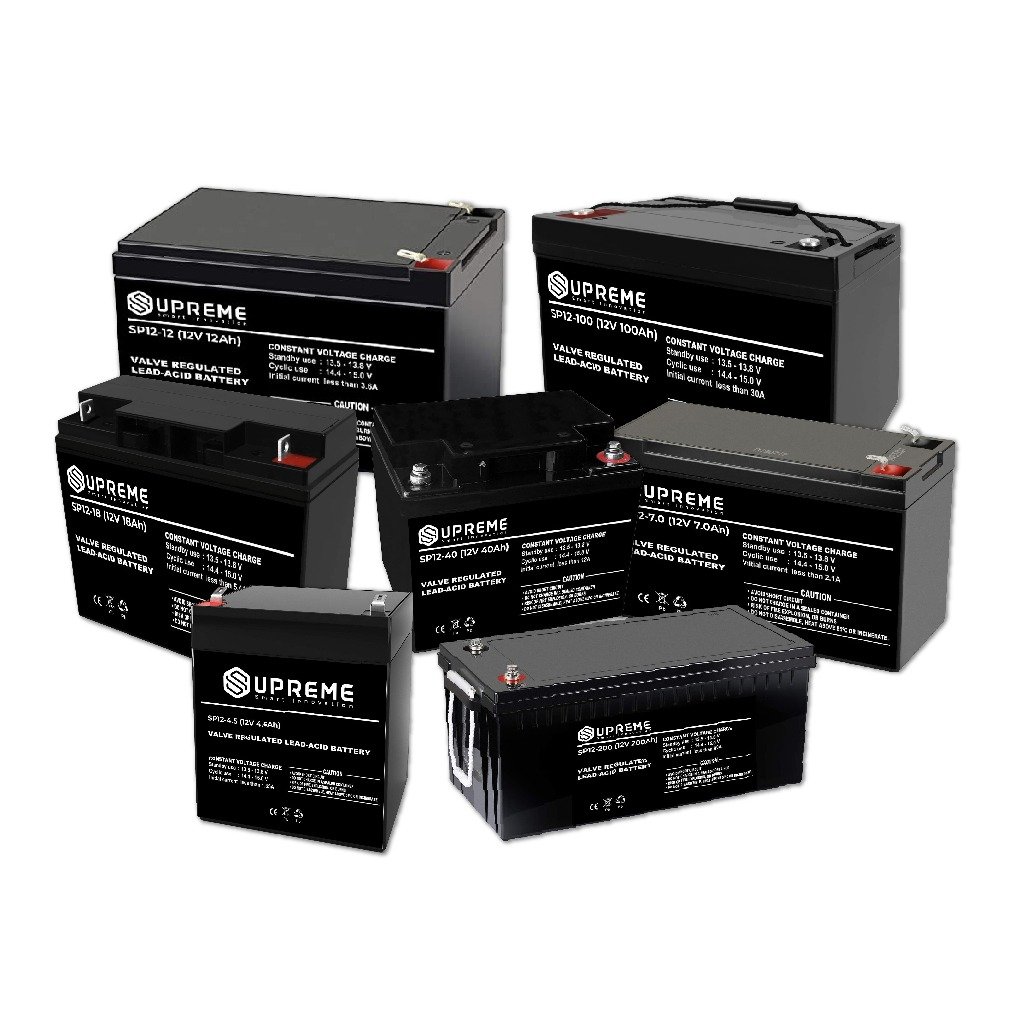
VRLA vs LI-ION Batteries
Lead-acid and VRLA batteries, in general, are among the most cost-effective batteries on the market. Compared to Li-ion batteries, which are often multiple times more expensive, they have the lowest purchase price. However, the purchase price is not the only factor when it comes to batteries. All batteries reach end of life, and when they do, they must be replaced.
In general, Li-ion batteries will last longer, and therefore, need to be replaced less often. This can result in Li-ion saving money over the system’s life, which could justify the increased purchase price. But based on initial cost alone, VRLA is the better option.
In the same space, Li-ion batteries can hold more energy than a VRLA. This means Li-ion batteries are more energy-dense and are useful when space is limited in a system. This size savings extends to weight as well. Their lighter weight makes Li-ion batteries suitable for use in mobile phones, tablets, and computers.
A VLRA battery should never be discharged to lower than 50 percent of its total capacity. This is referred to as the battery’s depth of discharge. A Li-ion battery can be discharged down to 15 percent of its total capacity. This means Li-ion batteries also have a higher effective capacity and can sustain a load for a longer duration when compared to VLRA.
A battery has a maximum number of charging cycles before it starts to degrade and lose capacity. The number varies based on the environment the battery is operating in, as well as the depth of each discharge. In general, a VRLA battery provides 200 to 300 cycles, while a Li-ion battery provides 500 to 1,500. If used in a system that is constantly discharging, Li-ion batteries will need to be replaced less often than VRLA.
In general, batteries are very susceptible to the temperature at which they operate. Batteries stored at too high of a temperature will discharge faster and have a lower total lifetime. Batteries stored at too low of a temperature will lose performance and can be damaged if charged.
The optimal temperature for all batteries is approximately 20° C (68° F), but the type of battery affects the range that it will operate in. The typical range for a VRLA is 0° C to 40° C, while a Li-ion ranges from -20° C to 60° C.
It may seem from these comparisons that Li-ion batteries are the clear choice, and in many ways, they are. The superior size, weight, charge cycles, and operating temperature make them a great choice for any application. However, there are still cases for VRLA. Besides the upfront cost savings, there may be no noticeable difference between the batteries given the right application.
| Table 1: A breakdown of various factors and how VLRA compares to Li-ion batteries. |
| In cases where the batteries are in an ideal environment, being properly charged by the UPS, and not discharging too often or deeply, VRLA batteries could function identically to Li-ion. The lifespan of the VLRA will be shorter but could still be long enough that its replacement costs are less than that of the Li-ion. Table 1 gives a breakdown of various factors and how VLRA compares to Li-ion. |
| MAXIMIZING UPTIME |
| Even the best battery will eventually reach end of life, so finding the optimal time to replace it can save system downtime and money. With system monitoring, the user can obtain data on the availability of each battery. This data can also be used to find existing problems in the system that may be prematurely killing batteries. |
| In an installation with 100 batteries, every battery is going to degrade slightly differently. The easiest way to deal with this is by replacing every battery after some predefined period. The advantage is that the maintenance is easy to schedule, and there is no system downtime (excluding a faulty battery). The downside is the cost of replacing batteries that potentially could have continued to operate for much longer. |
| The simplest way to monitor would be an indication on the UPS that the battery has not or will not support the load. This could be accomplished with local or remote indication, and it ensures that only bad batteries will be replaced. The advantage of this approach is that there are no wasted replacements. The disadvantages are increased complexities in maintenance, because failures can be random, as well as the need for some way to constantly monitor all the systems. |
| The most advanced form of monitoring analyzes many different factors of a battery and provides data based on those factors. For example, Phoenix Contact’s IQ Technology analyzes batteries and reports data such as remaining charge, remaining lifetime, current temperature, output voltage, and much more. This sort of data allows the use of preventive maintenance. Battery replacements can be scheduled for a specific period and, using data from the UPS, only the batteries near their end of life will be replaced. The main disadvantages are setting up a system to collect all this data and training users on how to use any associated software. |
| To ensure the availability of a UPS system, proper consideration must be taken of each application and its requirements. When there is a power failure, the proper battery will make sure the system does not go down, and everything runs smoothly. |
| In conjunction with a good monitoring system, maintenance can be regularly performed, so there are no unexpected failures. Combined, these two factors will maximize uptime and ensure that there is backup in the case of a power failure. |


